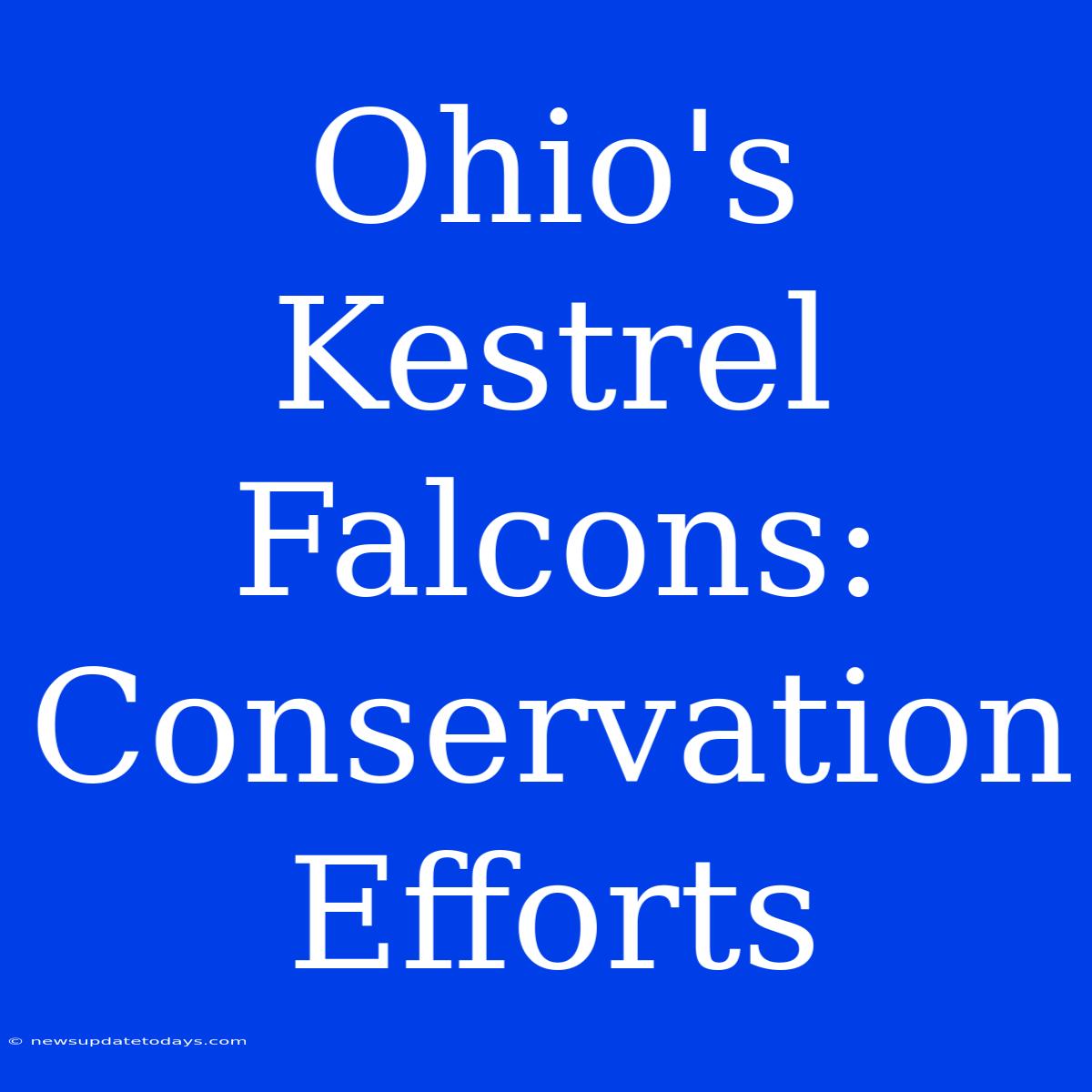Ohio's Kestrel Falcons: A Fight for Survival and Conservation Successes
The American kestrel, a vibrant small falcon, faces challenges in Ohio, mirroring struggles faced by this species across its range. While not yet critically endangered in the state, population declines necessitate dedicated conservation efforts. This article delves into the current state of Ohio's kestrel population, the threats they face, and the promising conservation initiatives underway to secure their future.
Understanding the American Kestrel in Ohio
The American kestrel ( Falco sparverius ) is the smallest falcon in North America, easily identifiable by its rufous-colored back and tail, and distinctive facial markings. Ohio provides crucial habitat for these birds, particularly in agricultural landscapes and open woodlands. However, their numbers have been steadily decreasing in recent decades, raising concerns amongst conservationists and ornithologists.
Threats to Ohio's Kestrel Population
Several interconnected factors contribute to the decline of kestrels in Ohio:
-
Habitat Loss: Intensification of agriculture, urbanization, and deforestation reduce the availability of suitable nesting sites and foraging grounds. Loss of grasslands and open areas directly impacts their prey base.
-
Pesticide Use: Exposure to pesticides can weaken kestrels, impacting their reproductive success and overall health. Bioaccumulation in their prey further compounds this issue.
-
Rodenticide Poisoning: Secondary poisoning from consuming rodents that have ingested rodenticides is a significant threat. This can lead to debilitating illness and death.
-
Collisions with Vehicles and Structures: Kestrels often perch on roadside wires and structures, increasing their vulnerability to collisions with vehicles.
-
Predation: Larger birds of prey and mammals can prey on kestrel nests and young.
Conservation Efforts: A Collaborative Approach
Recognizing the seriousness of the situation, various organizations and individuals are actively involved in kestrel conservation in Ohio:
-
Nest Box Programs: The installation of artificial nest boxes provides safe nesting sites, compensating for the loss of natural cavities. Monitoring these boxes helps track nesting success and population trends.
-
Habitat Restoration: Efforts are underway to restore and enhance suitable habitats, including grassland and woodland management practices that benefit kestrels and their prey.
-
Rodenticide Awareness Campaigns: Educating farmers, landowners, and the general public about the dangers of rodenticides and promoting safer alternatives is crucial in mitigating secondary poisoning.
-
Research and Monitoring: Ongoing research helps refine conservation strategies by providing valuable data on population dynamics, habitat use, and the impact of various threats. Citizen science initiatives also play a significant role in data collection.
-
Partnerships: Successful kestrel conservation requires a collaborative approach involving government agencies, non-profit organizations, universities, and private landowners.
The Future of Kestrels in Ohio: Hope on the Horizon
While challenges remain, the concerted conservation efforts undertaken in Ohio offer a glimmer of hope for the future of the American kestrel. Through continued dedication, research, and collaboration, it is possible to reverse the population decline and ensure these magnificent birds continue to grace Ohio's skies for generations to come. The success of these initiatives depends on sustained commitment and public awareness. Support for conservation organizations and responsible land management practices are critical to ensuring the long-term survival of Ohio's kestrel falcons.

